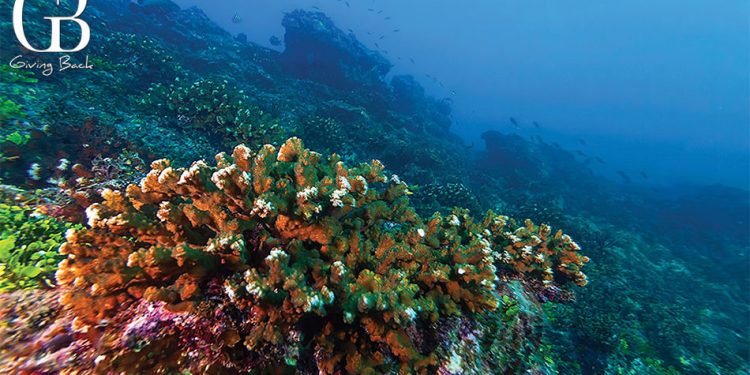WONDERS OF ISLAS MARÍAS

THE UNSUNG ARCHIPELAGO
By Yehuda Ben-Hamo, Conservation Outreach and Media Coordinator, WILDCOAST
Roughly 100 miles (160 km) northwest of Cape Corrientes and about 230 miles (370 km) southeast of the tip of Baja California Peninsula, lies the unspoiled beauty of the Islas Marías archipelago, a remarkable Biosphere Reserve and UNESCO world heritage site consisting of rugged rocky cliffs, mangroves, endemic species and vibrant coral reefs. The stunning island sanctuary is home to a unique range of birds, reptiles, mammals, and marine life found nowhere else on Earth.
Birdwatchers can delight in observing magnificent frigatebirds, brown pelicans, and blue-footed boobies, among many other avian species. Reptiles such as green iguanas and endemic lizards can be found within the island’s terrestrial habitats. In the surrounding waters, colorful coral reefs support an abundance of marine life, including colorful fish, sea turtles and dolphins. The reserve is an important nesting and feeding site for large colonies of sea birds, sharks and sea turtles. The island’s mangrove patches protect coastal areas, acting as buffers against erosion and storm surges.
WILDCOAST recently led an underwater coral reef monitoring expedition to the 1.5 million-acre Islas Marías Biosphere Reserve to monitor coral reefs inside the islands’ Marine Protected Area (MPA). The journey was conducted by an all-women team of marine biologists, including WILDCOAST’s Coral Conservation Manager, Rebeca Melendez, and Oaxaca Conservation Coordinator, Gabriela García Vázquez, as well as two scientists from the Research Laboratory for Reef Conservation at the National Autonomous University of Baja California Sur, and members from Mexico’s National Commission of Natural Protected Areas (CONANP).
WILDCOAST is an organization that conserves coastal and marine ecosystems and addresses climate change through natural solutions. Founded in 2000 and with offices in California and Mexico, WILDCOAST has helped conserve 38 million acres of coastlines and ocean habitat including coral reefs, mangrove forests, wetlands, sea turtle nesting beaches, gray whale breeding lagoons, underwater marine parks and more.
The data collected on the expedition help scientists and CONANP to analyze the health of corals and compare the wealth of marine life inside the Marine Protected Areas (MPAs) over time, which also helps inform future management and conservation decisions. Unfortunately, warming ocean temperatures induced by climate change continue to threaten coral reefs around the globe. With this year being forecasted as an El Niño year, these researchers fear that warmer than usual temperatures will threaten corals forcing them to release their life-sustaining zooxanthellae in a process known as coral bleaching. The previous El Niño and marine heatwaves of 2016-2017 were catastrophic to about three-quarters of the world’s reefs.
The WILDCOAST team is wasting no time and working around the clock finding innovative ways to help safeguard coral reefs and increase their resilience in Islas Marias Biosphere Reserve as well as nine other national parks in Mexico that protect coral reefs to ensure their survival during El Niño’s projected marine heatwave. Conserving the biodiversity and ecological integrity of Islas Marias Biosphere Reserve also ensures the conservation of both natural and cultural heritage, making it an essential area for research, education, and sustainable tourism.





